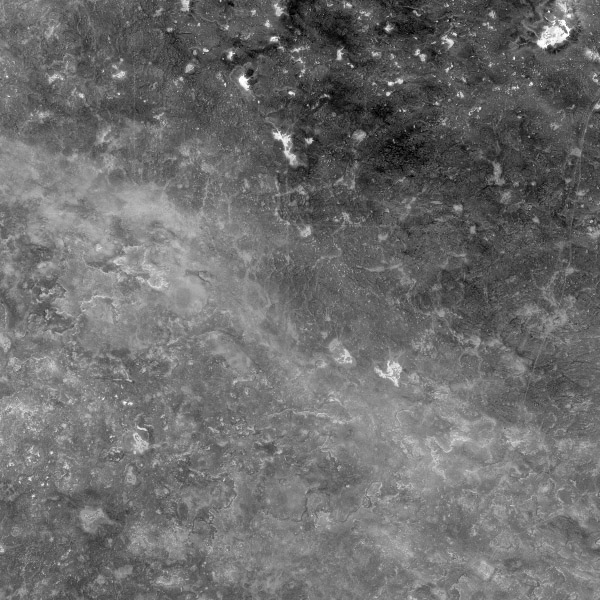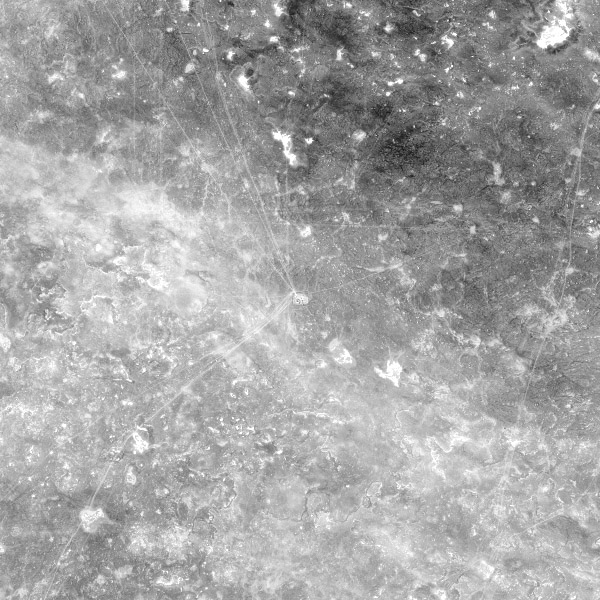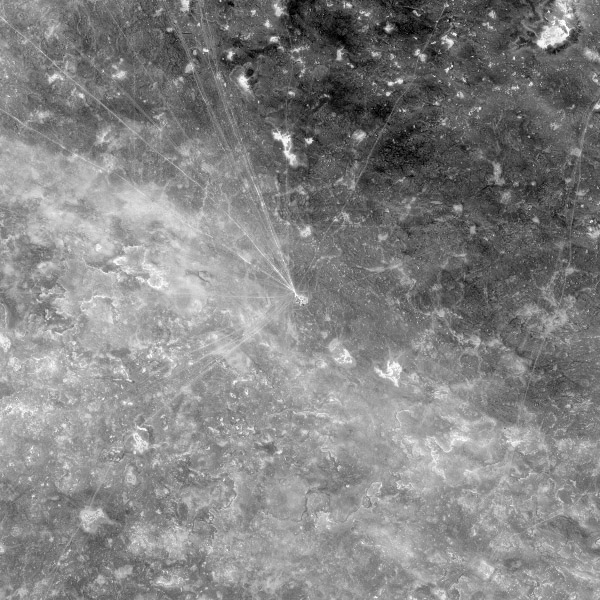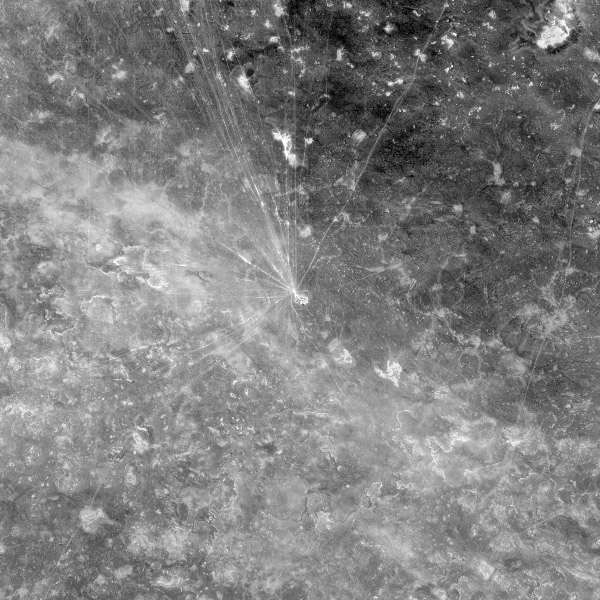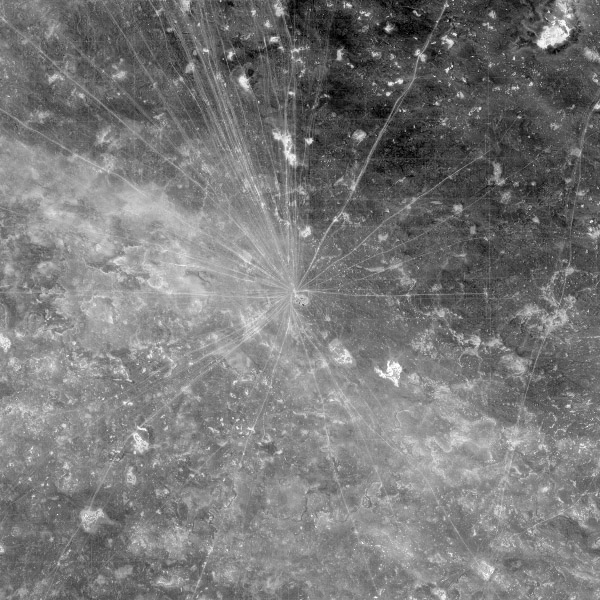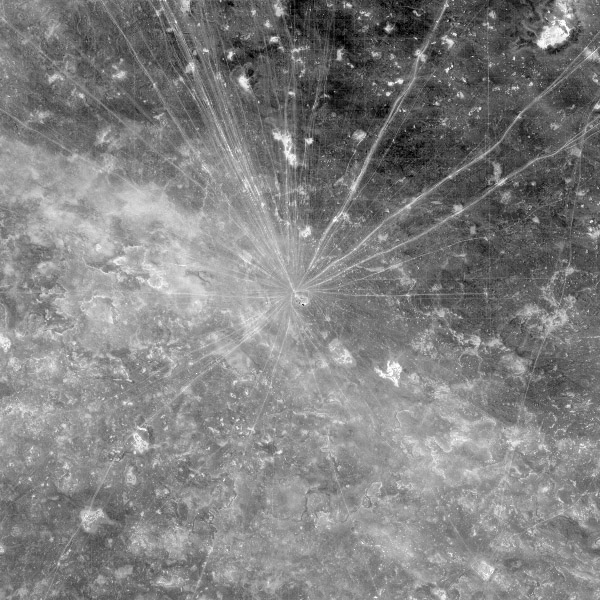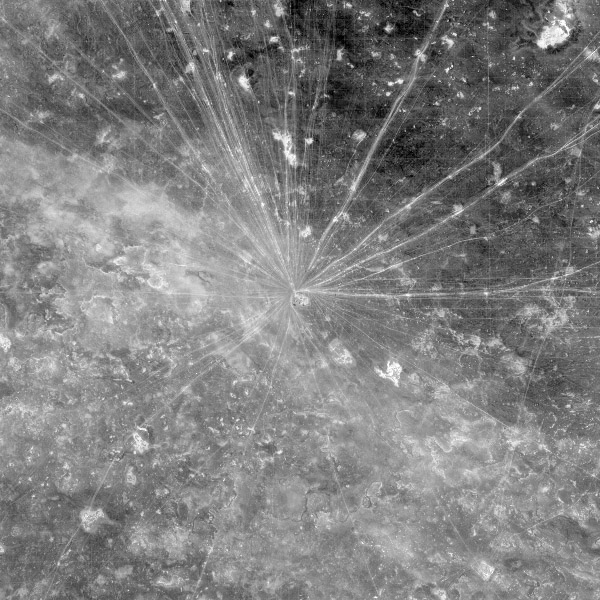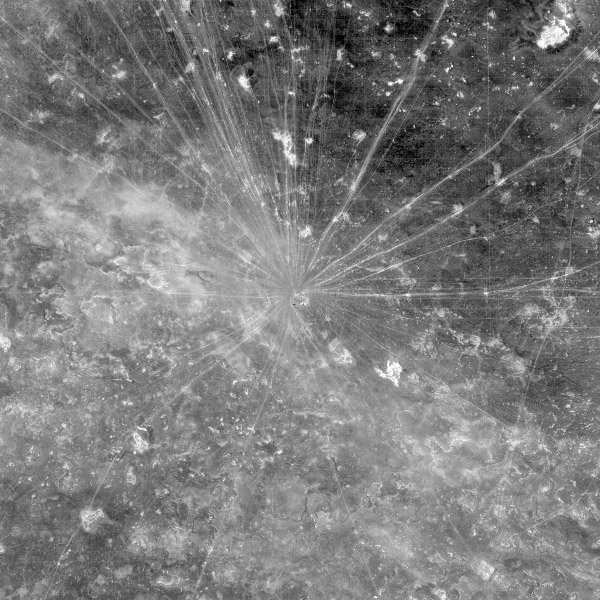A Curious Observation
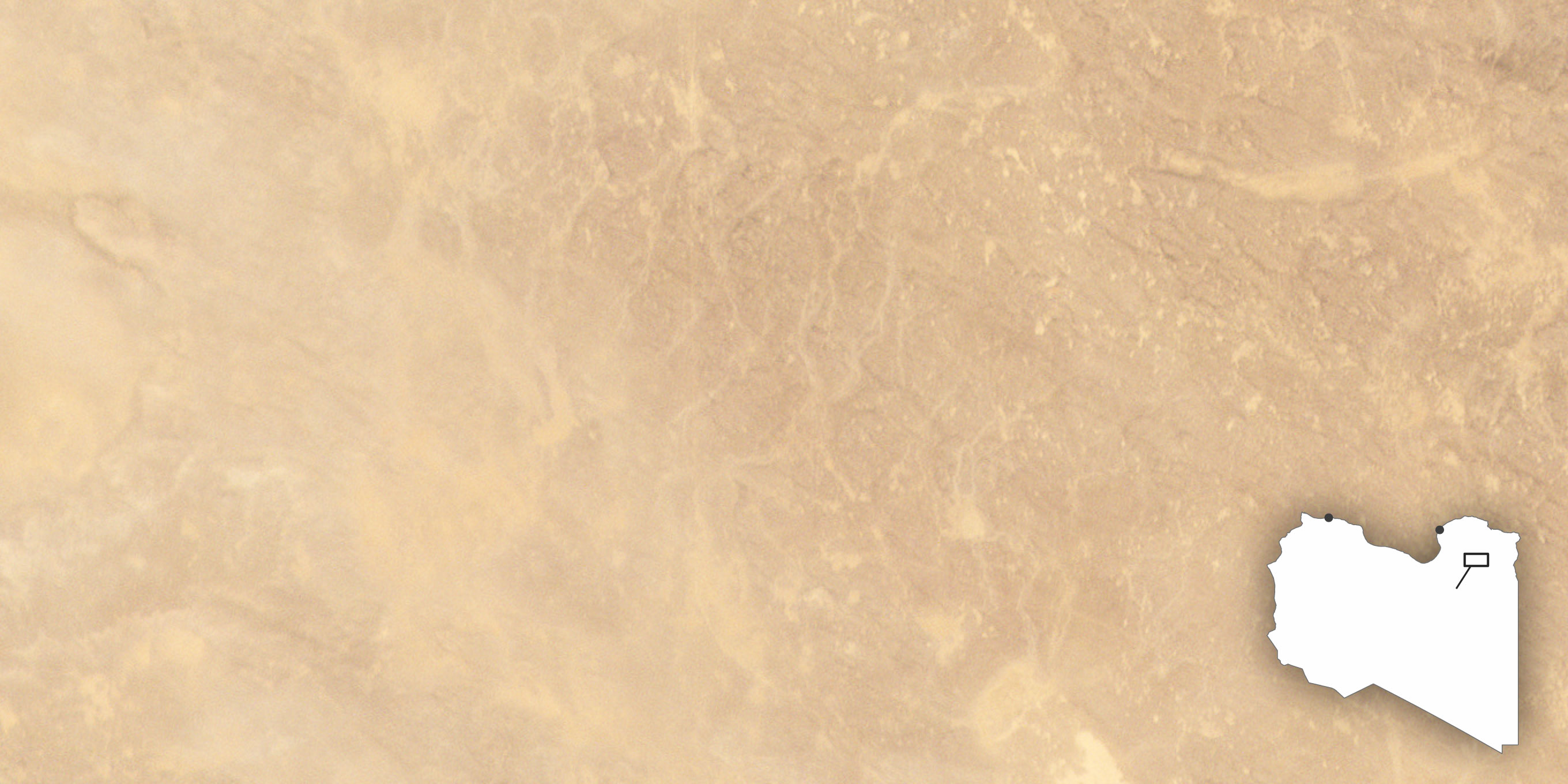
Benghazi
Tripoli
Area of interest
LIBYA
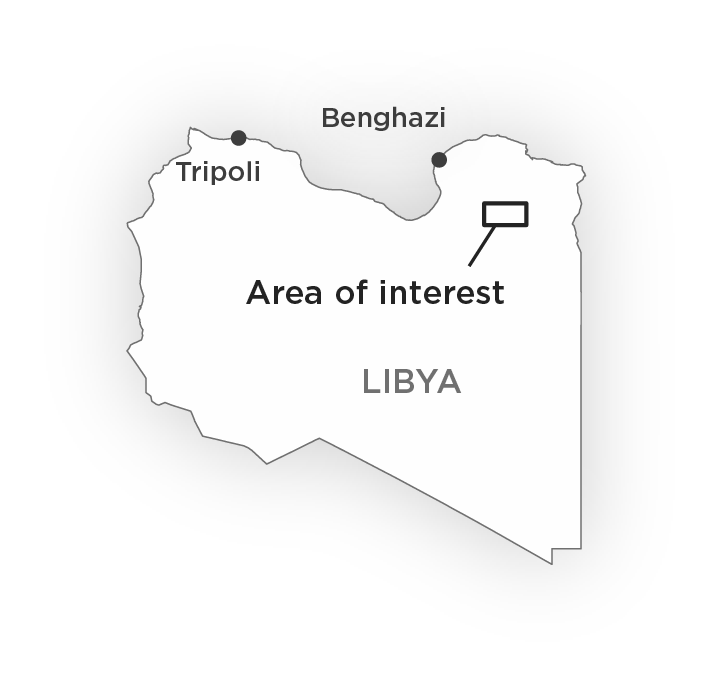

December 2, 2013
The Libyan Desert is one the harshest environments in the world, filled with rocky plateaus and sandy plains that remain largely untouched by humans.
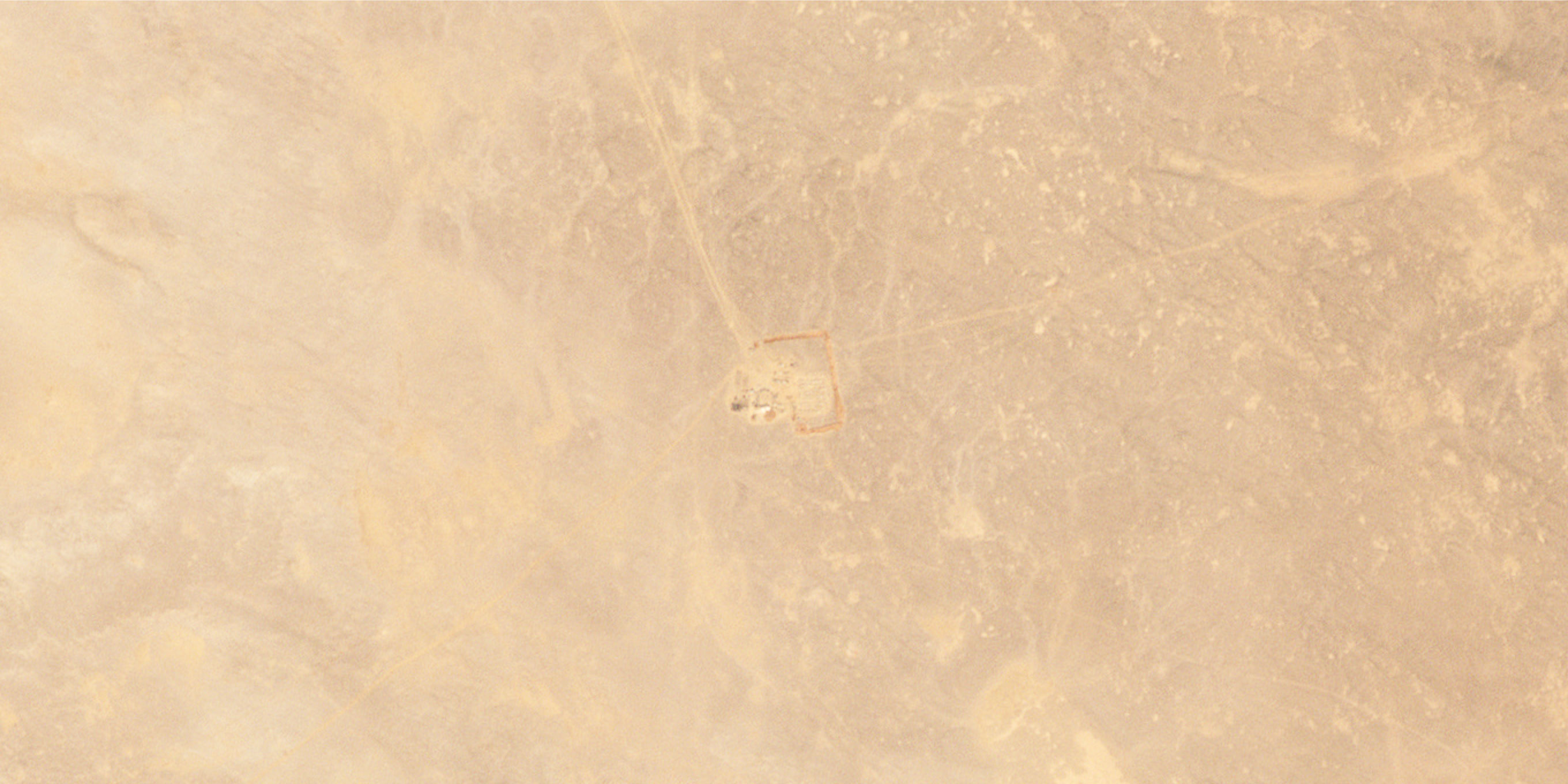
Unknown Encampment
January 16, 2014
In January 2014, Planet identified traces of human activity appearing in the northeastern region of the Libyan Desert. Two large dirt tracks lead to an unknown encampment, which also has a bermed border under construction.
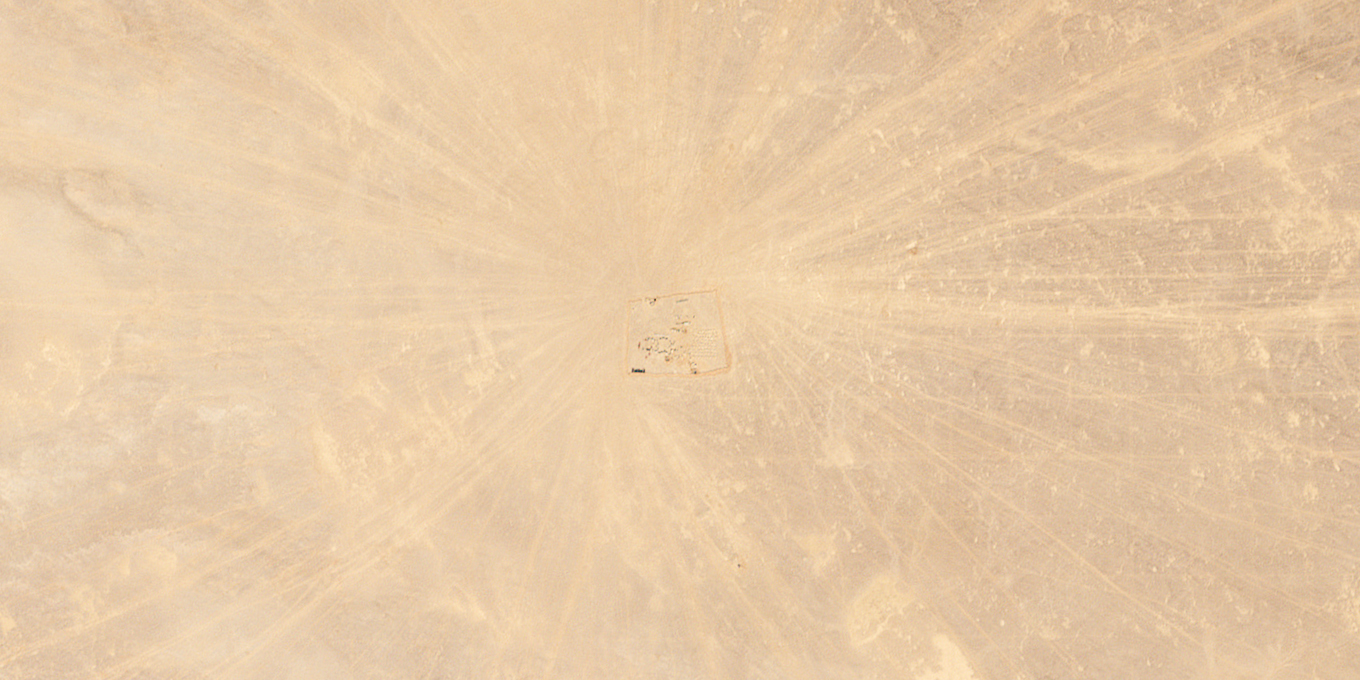
December 19, 2014
By the end of the year, the small encampment has grown, with dirt tracks creating a network-like system around it. You can also begin to discern faint lines that intersect these tracks in areas east of the site.
